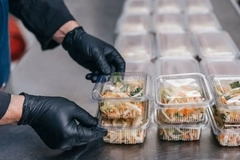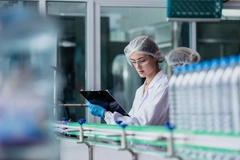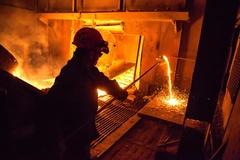US researchers develop light-driven method to recycle PVC packaging

A team of researchers at Princeton University’s Stache Lab, US, has uncovered a new approach to recycling PS and PVC using intense light and a plastic pigment called carbon black. The light-driven recycling method can depolymerize post-consumer waste and plastic plasticizers from PVC packaging.
The study findings, recently published in the Journal of the American Chemical Society, showcase a development in photothermal conversion, a process that harnesses focused intense light to break down plastic waste.
Erin Stache, assistant professor of chemistry at Princeton University, tells Packaging Insights: “Chemical recycling processes typically rely on catalysts or other additives to improve process efficiencies. Our approach is unique in that it uses an existing plastic additive with the addition of light to trigger the chemical recycling process.”
“One of the challenges we face in designing smarter, more recyclable materials is fitting it into the economics of existing plastic and material production — that’s not a challenge here since carbon black is already used extensively. We also show that not all plastics need to contain this special additive — we can mix in a small percentage of black plastic and still trigger depolymerization for a whole mixture.”
Advancing upcycling
By exposing carbon-black-containing plastics to intense light, researchers previously found that they could initiate depolymerization, effectively breaking down plastics into their chemical building blocks.
 Black-colored plastic accounts for about 15% of all plastics.Building on their success with PS, the team extended their method to PVC, one of the least recycled plastics due to its carbon-chlorine bonds. When heated, PVC releases hydrochloric acid (HCl), a highly toxic and corrosive byproduct, making traditional recycling difficult. However, the researchers turned this challenge into an advantage.
Black-colored plastic accounts for about 15% of all plastics.Building on their success with PS, the team extended their method to PVC, one of the least recycled plastics due to its carbon-chlorine bonds. When heated, PVC releases hydrochloric acid (HCl), a highly toxic and corrosive byproduct, making traditional recycling difficult. However, the researchers turned this challenge into an advantage.
Stache explains that the researchers used carbon black to start the thermal degradation of PVC, which produces HCl with an acceptor for HCl that reacts to make an adduct. In this way, the researcher can access a new commodity chemical from the process. The byproduct is combined with another commodity chemical to create a new product.
“The benefit of our process is that the HCl is directly added to an acceptor to generate a new molecule of high value. Now, our existing lab scale process uses excess PVC, which means excess HCl is generated. However, we are considering ways to improve the efficiency of our process so that minimal excess HCl is generated,” she elaborates.
Industrial applications
While the results are promising, one of the main challenges of photothermal conversion is scaling the process for industrial use. The ability to ensure adequate photon penetration into layers of waste plastic is one factor that can affect real-world application.
“We’re using post-consumer waste and depolymerizing it just by shining light on it. That’s the most applied thing you can do. Now, we’re trying to develop a lot of fundamental solutions, and then we start to work with the engineers to figure out how to scale this. If the chemistry works, you’re going to find a way to scale it,” says Stache. Researchers believe there is a need to fully utilize the chemical resources present in the raw starting materials.
Researchers believe there is a need to fully utilize the chemical resources present in the raw starting materials.
The lab’s method has been tried out on post-consumer waste such as PVC pipes, black construction pipes, trash bags, credit cards, and yellow rubber duckies.
“We are achieving 80% styrene monomer recycling rate without any additional chemicals. We’re relying on the existing commercial additives that are currently used in product production, which is a huge benefit to our approach — no expensive, exogenous catalysts or reagents.”
“For industrial applications, the reaction setups, such as container, gas flow, light collection, and conditions, need to be re-optimized for scale and reaction efficiency, and we are pursuing some very novel approaches with our collaborators,” says Stache.
“Since our process is using the same thermal mechanism of depolymerization, we are hopeful that the existing downstream technology for collecting monomers could be used in our process. We just need to identify the right strategy for efficient irradiation.”











